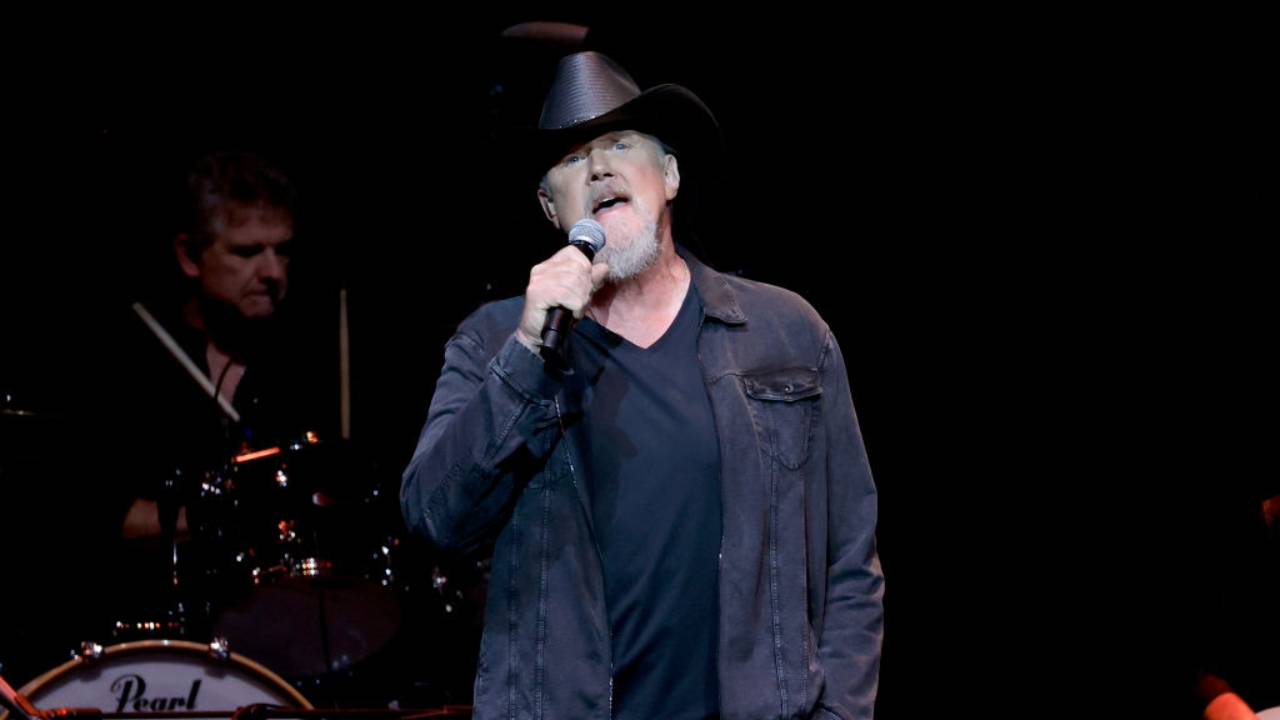Merle Haggard: 10 of His Prime Hits

Editor's note: As CMT remembers the life and career of Merle Haggard, who died Wednesday (April 6) at age 79, here's a feature story from 2014 which highlights some of the icon's most defining musical moments.
Merle Haggard was born in a Bakersfield boxcar three years after his parents left Checotah, Oklahoma, for work in California during the Great Depression. His daddy died when Merle was only 9 years old, so he found comfort in hopping trains and Lefty Frizzell records. He’s been a juvenile delinquent, a ditch digger, an oil field worker and a hitchhiker. He spent his 21st birthday in solitary confinement at San Quentin State Prison.
Haggard’s history, though downright compelling, is not why he matters. Instead, it’s because he created an epic working man’s oeuvre that no one else has managed to touch.
Whittling down the Hag’s immense catalog to a handful of hits is a tall order, but we like a challenge. So here they are: 10 gems that follow Haggard’s rise from convict No. A-45200 to American icon.
“The Bottle Let Me Down”
Haggard sounds so young, smooth and sad on this 1966 hit. Written and delivered to woeful perfection by the Hag, the song skips the party and starts at closing time, when he realizes the blissful amnesia he’s been drinking toward all night isn’t coming. Her memory won’t fade and that reliable wine has turned out to be like everything else: “The one true friend I thought I’d found/tonight, the bottle let me down.” The out-front steel guitar laughs and cries along with him.
“Sing Me Back Home”
When he was 20, Haggard landed in San Quentin after accumulating a rap sheet featuring hot-check writing and armed robbery. He chose prison as the setting for this No. 1 hit from 1967, about the pull of home and the power of music. Is it heartbreaking? You bet. Haggard imbues his subject with dignity, tearing down the walls between inmates and listeners to reveal empathy and shared experience that lasts well beyond the song’s almost three minutes. And yes, it really happened: His name was Rabbit. He was executed. But not before Haggard sang him home.
“Mama Tried”
This mostly autobiographical No. 1 became a classic almost as soon as it was released in 1968. Fans and critics have often heard “Mama Tried” as Haggard’s apology to his mother for his youthful rebellion, but the rolling acoustic guitar-picking that runs throughout the song doesn’t evoke mamas so much as trains, endlessly clipping along. Apology or not, Haggard sings with admiration about the woman who wouldn’t give up on him, no matter how wild or wrong he went, suggesting that his mama might be the only person he knows who’s as stubborn as he is.
“Workin’ Man Blues”
Early on, Haggard’s mother Flossie thought her charismatic youngest child might grow up to be a preacher. In a way, he did. No one has given voice to the plight and pride of America’s working class like Haggard, and this chart-topper he wrote and sang in 1969 pays definitive homage to blue-collar life. The second single off the seminal A Portrait of Merle Haggard, “Workin’ Man Blues” plants listeners firmly in Bakersfield country -- the thumping, juke-joint, Southern California honky-tonk that Buck Owens, Wynn Stewart, Tommy Collins and Haggard perfected.
“Okie From Muskogee”
Even people who don’t know Haggard know “Okie From Muskogee,” a now-legendary 45 that immediately made political hay when it climbed to No. 1 in the fall of 1969. Haggard takes aim at free love, recreational drugs and disrespecting authority, and ever since the song’s release, folks have argued about his intent. While he may have a little fun at the straight-laced protagonist’s expense, he ultimately respects and sympathizes with him. He has said in interviews that frustration with the younger generation’s seeming lack of appreciation for freedom -- something a former convict knows a bit about -- helped inspire him to write the tune.
“If We Make It Through December”
The holidays aren’t always happy, and in late 1973, Haggard applied his knack for mixing sadness with hope to this poignant four-week No. 1 hit about a family struggling to make it through an especially cold winter. Christmastime may provide the setting, but the song’s treatment of one laid-off working man’s ability to hang on and believe made it a year-round standard.
“Misery and Gin”
Has there ever been a better marriage of song to singer than Haggard and “Misery and Gin”? The answer is no, kids. No way. Written by Snuff Garrett and John Durrill, the 1980 smash without a single throwaway line proved that as Haggard kicked off a new decade, his voice, which had always been golden, had done the seemingly impossible: it’d gotten even better. His mellow, pitch-perfect drawl features a hard edge that always threatens to roar but never quite makes it to a snarl, ensuring his audience hangs on every syllable.
“Big City”
When Haggard signed with Epic Records in 1981, he had to record two new albums in a hurry. After a full day in a Los Angeles studio, he went out to the bus to talk with his childhood friend Dean Holloway, who’d long since assumed driving duties. Haggard asked how he was, then Holloway replied, “I hate this place. I’m tired of this dirty old city.” Haggard grabbed a pen and paper and the two wrote “Big City,” a swinging ode to escaping the concrete jungle that became the title track to his first Epic album. Holloway’s other choice contribution to the song? When Haggard asked him where he’d rather be than L.A., he responded, “If it were up to me, I’d be somewhere in the middle of damn Montana.”
“Are the Good Times Really Over”
Haggard captured the gloomy side of nostalgia in this shuffling hit from 1982. His signature wit and unblinking indignation are on brilliant display as he delivers vivid lines that don’t mince words: “I wish Coke was still cola, and a joint was a bad place to be/And it was back before Nixon lied to us all on TV.” He sounds both bemused and forlorn, but then, his longing for past innocence morphs into optimism as he offers the hopeful conclusion: “The best of the free life is still yet to come/The good times ain’t over for good.”
“That’s the Way Love Goes”
Lefty Frizzell and songwriting master Whitey Shafer penned this nugget that Haggard released in 1983. The No. 1 hit earned the singer his first Grammy -- a poetic twist of fate, given the song’s source. Haggard has idolized Lefty since he was a kid. Family and friends used to marvel at his uncanny ability to sound like Lefty, and his first time onstage was courtesy of the man himself, who demanded that the unknown teenager perform after hearing his spot-on impersonation. In a way, Haggard has built his entire career by paying homage to the people and places that made him, lovingly detailing nobility and grace in everyday, even lowly, corners.





